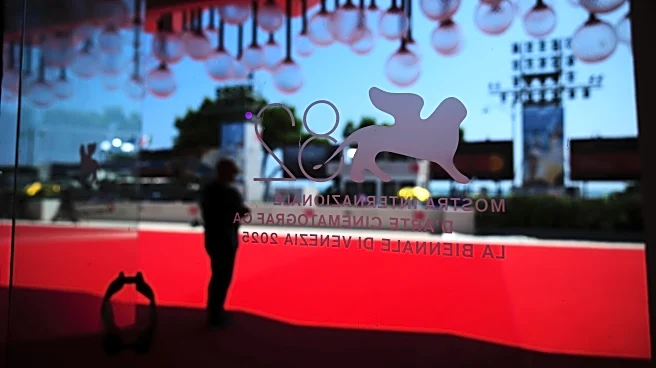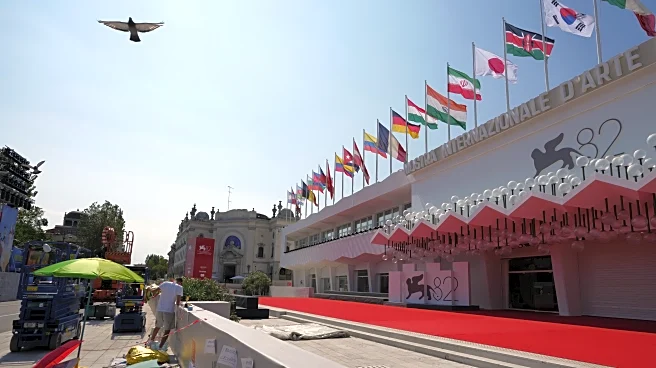What's Happening?
Hollywood figures such as Brad Pitt, Joaquin Phoenix, and Rooney Mara have joined as executive producers for the Gaza drama 'The Voice Of Hind Rajab,' which is set to premiere at the Venice Film Festival. The film, directed by Tunisian filmmaker Kaouther Ben Hania, tells the story of Hind Rajab, a young Palestinian girl killed by Israeli forces in Gaza. The film includes real audio from Rajab before her death and aims to highlight the universal grief and failure to protect innocent lives. The project has garnered significant attention and is expected to be a powerful entry at the festival.
Why It's Important?
The involvement of high-profile Hollywood figures in 'The Voice Of Hind Rajab' underscores the film's potential impact on global audiences and its ability to bring attention to the ongoing conflict in Gaza. By participating in this project, these celebrities are using their influence to amplify the voices of those affected by the conflict, potentially swaying public opinion and increasing awareness. The film's presence at major film festivals like Venice, Toronto, and London further elevates its platform, allowing it to reach a diverse audience and spark conversations about the humanitarian issues it addresses.
What's Next?
Following its premiere at the Venice Film Festival, 'The Voice Of Hind Rajab' will be showcased at other international film festivals, including Toronto, San Sebastian, Busan, and London. The film's journey through these festivals will likely continue to draw attention and provoke discussions about the situation in Gaza. The film's success could also influence future projects that aim to address similar humanitarian issues, encouraging filmmakers to tackle challenging subjects with the support of influential backers.
Beyond the Headlines
The film's narrative, based on real events, highlights the ethical responsibility of filmmakers to preserve memories and resist societal amnesia. By focusing on a child's tragic story, the film challenges audiences to confront uncomfortable truths and reflect on their role in global humanitarian issues. This approach not only serves as a powerful storytelling tool but also as a call to action for viewers to engage with and address the underlying causes of such tragedies.












